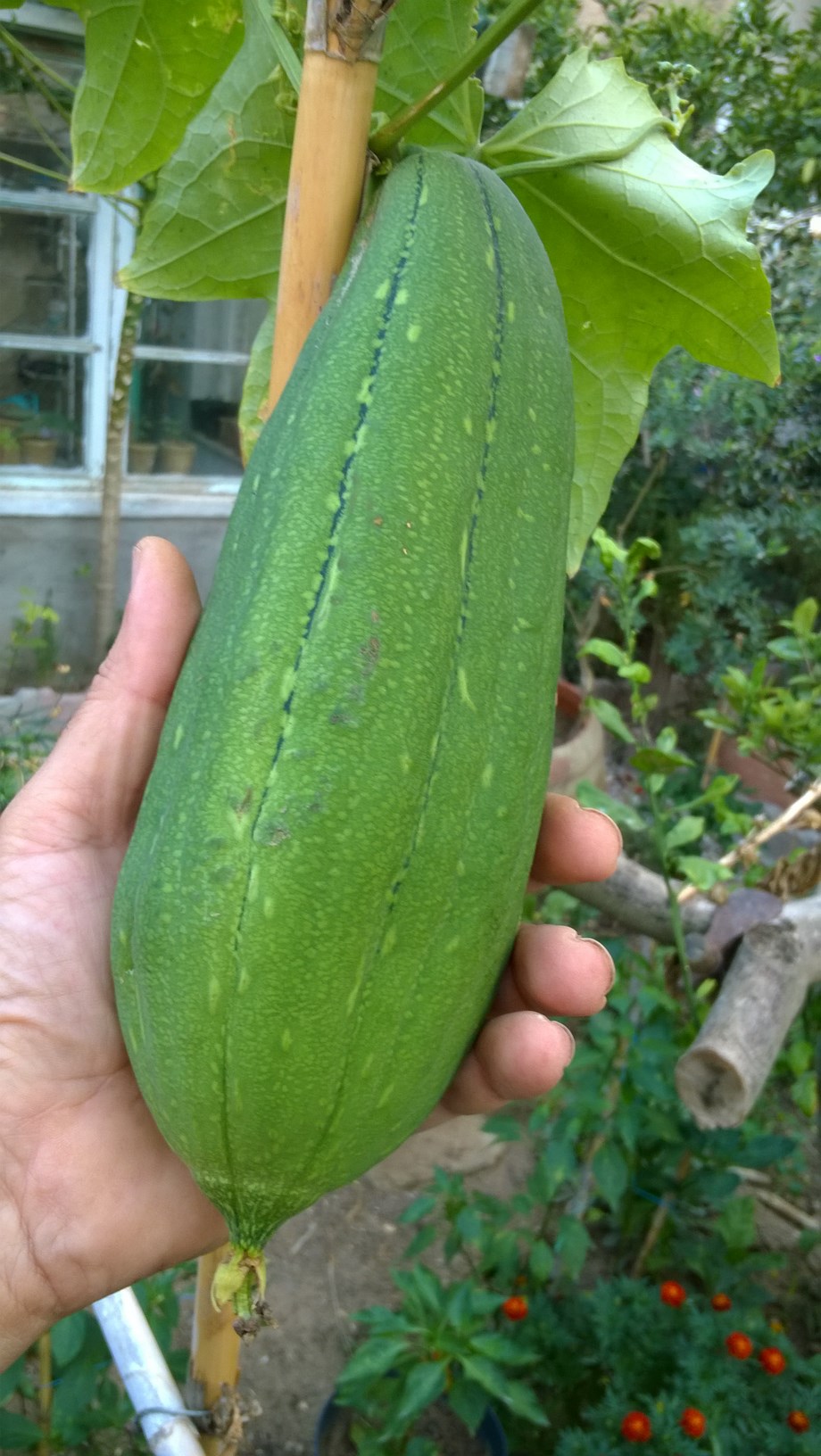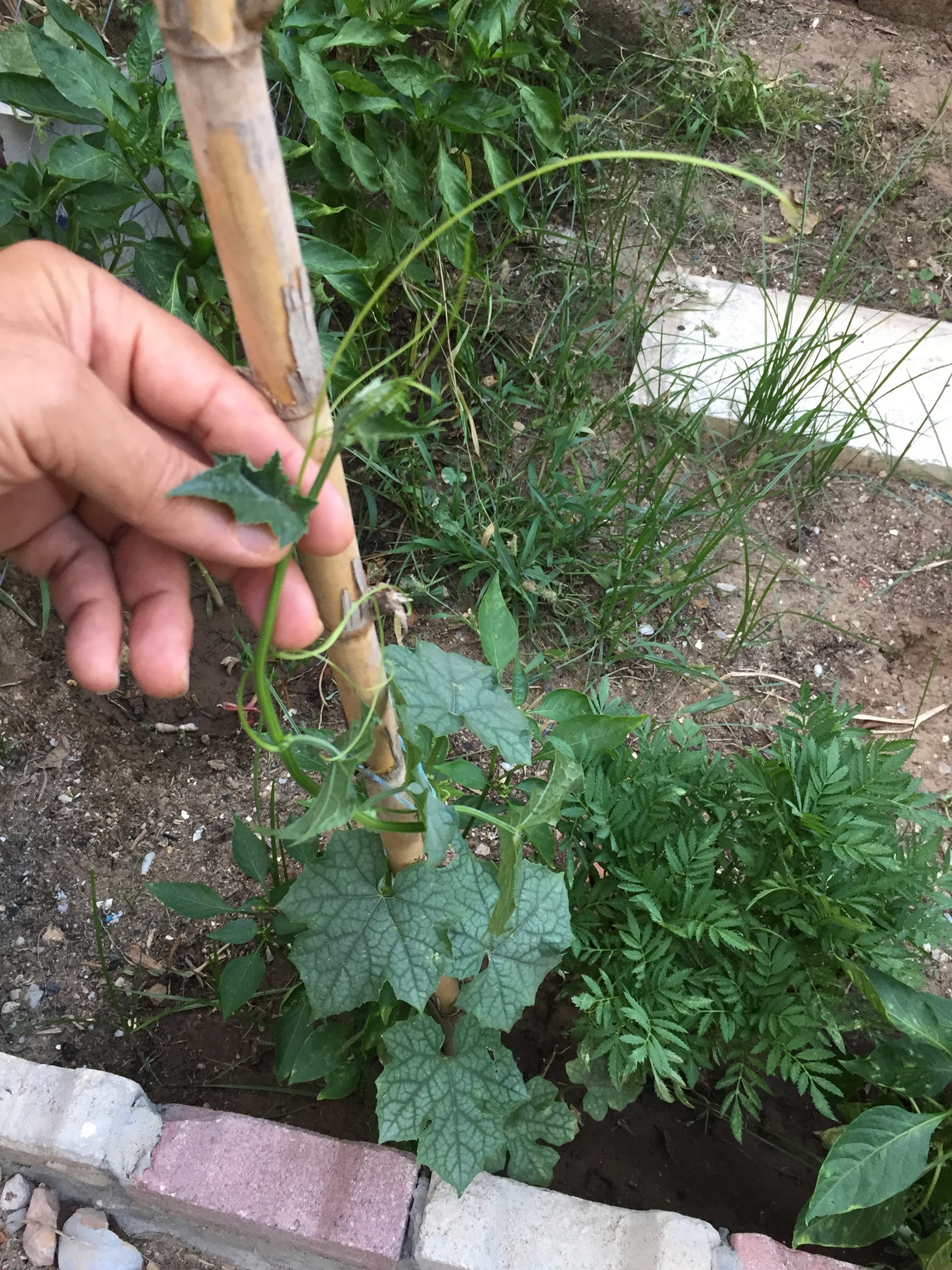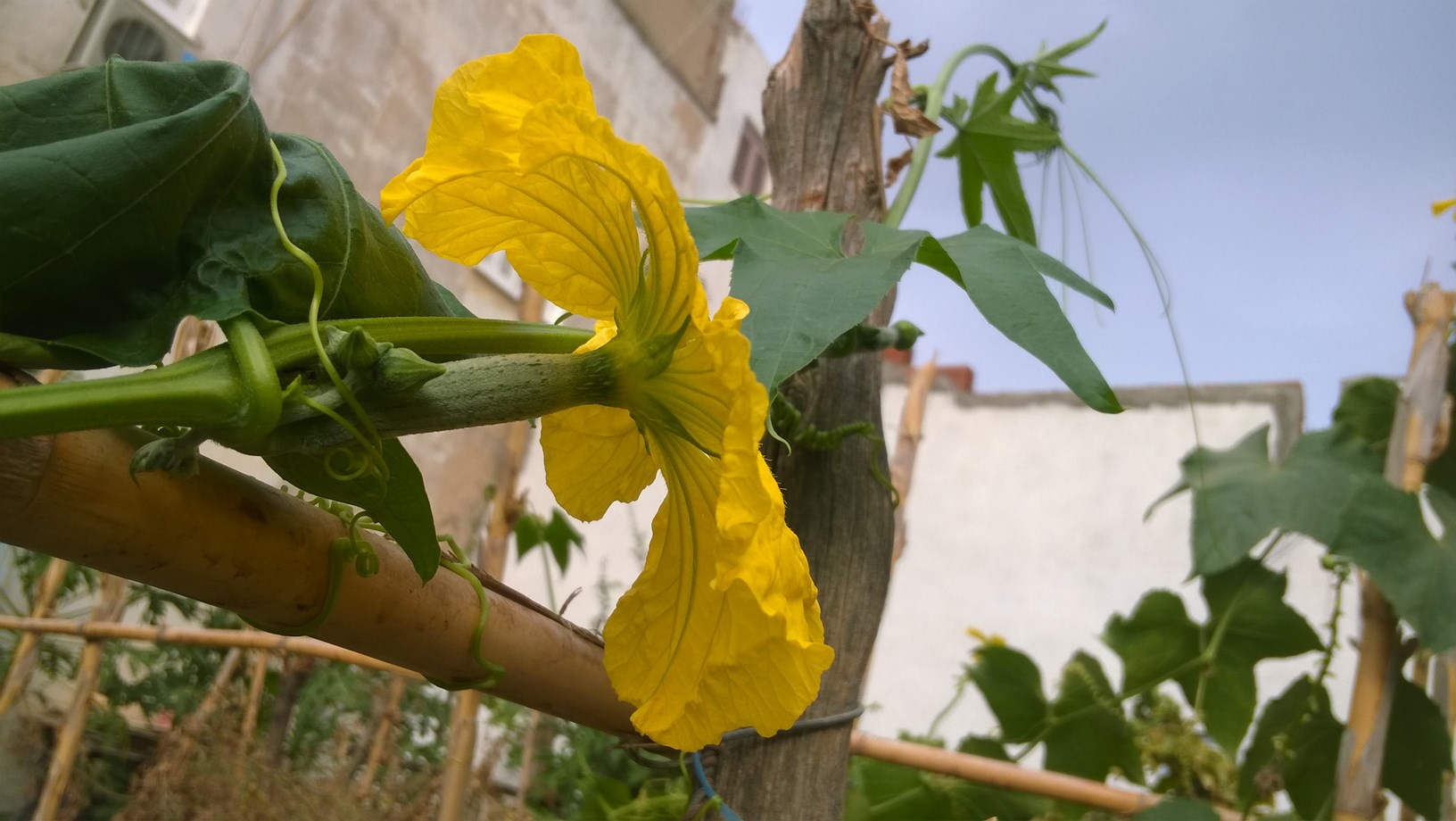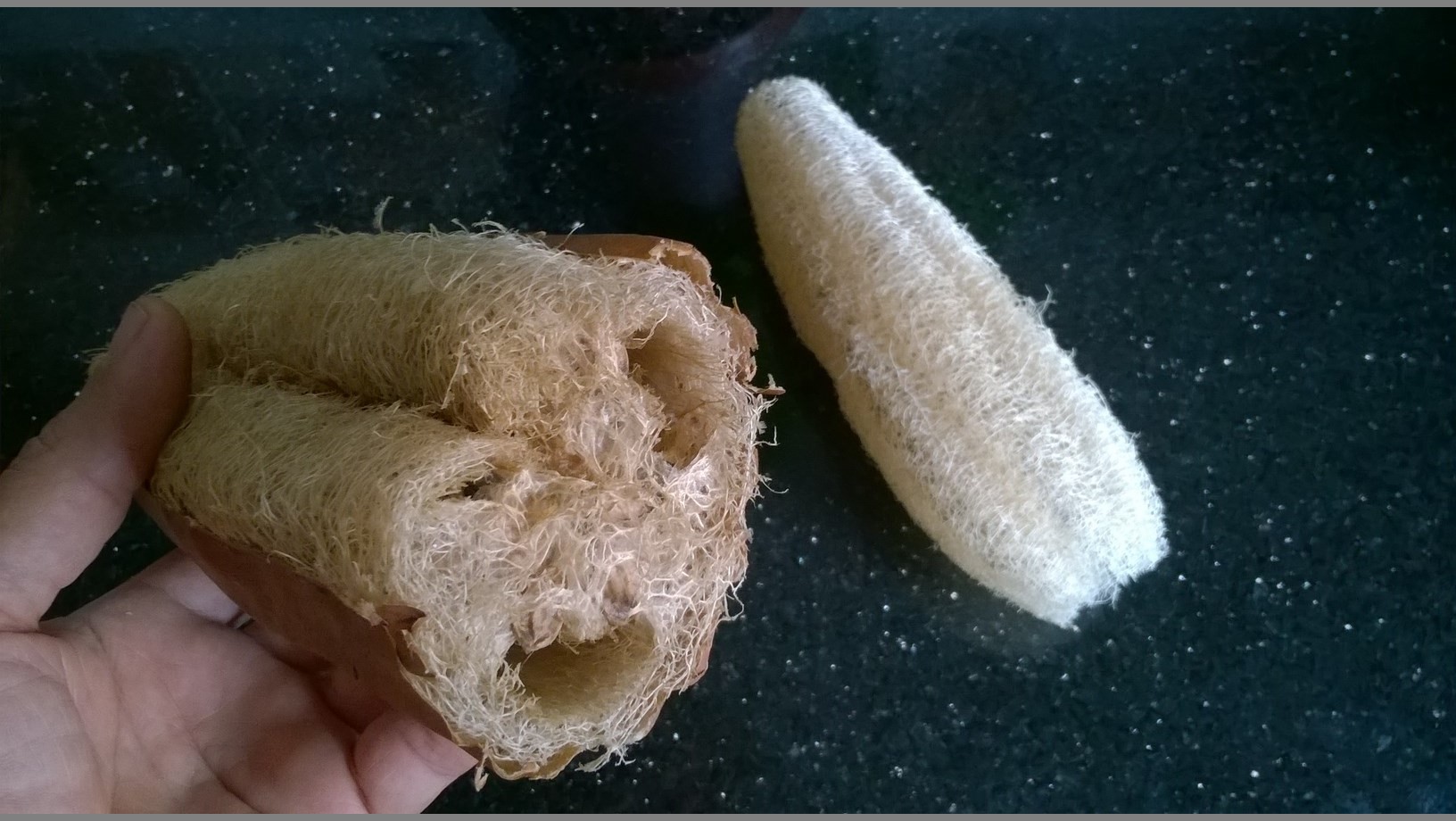What is a luffa gourd?
Table of contents
Luffa is quite easy to grow, and when the fruits are still young, they're actually quite delicious.
Luffa seeds planting
The most important step is to select good seeds for planting!
Part of the reason I had such good success with my germination rate is that I harvested the seeds myself, from my own Luffa, only a few months ago, and I have fresh seeds. But if you don’t have that luxury, you can buy a packet of luffa seeds on Amazon
Good mature luffa seeds are typically dark and hard. Luffa seeds germination is often slow and sporadic. To obtain good plant stands, luffa gourds should be produced from transplants. First of all, soak seeds in warm water for 24 hours. You can check out my video, it's very simple!
Watch: how to extract and plant luffa seeds video
Sow germinated seeds, two to three per pot. They will show up two or three days later if you're in a hot climate, or up to four days later in a cooler one.

The seedlings grow slowly while the roots develop. Provide lots of sun and don't let the soil get too dry. Small pots may need water every day, but don't over water. Grow for four to six weeks in a greenhouse at about 65-70 F.
Luffa should be transplanted outdoors after all danger of frost is past, but before transplanting, harden off the seedling to prevent shock, so the plants continue to put on healthy growth after you move them.
Hardening off is the process of slowly acclimating young plants or seedlings to a new environment. In other words, hardening off is a way for gardeners to gradually condition their plants to the comparatively harsh conditions of the outdoors.
Hardening off is the process of slowly acclimating young plants or seedlings to a new environment. In other words, hardening off is a way for gardeners to gradually condition their plants to the comparatively harsh conditions of the outdoors.
Want to read: How to harden off seedlings for transplanting
(ads2)
If you don’t have a big vegetable garden there is No Problem. You can plant Luffa plants in a big pot on a balcony or backyard as long as you provide the vines with something to grow on. Don’t forget they can easily get to be 30′ long under the right conditions.
Luffa sponges are members of the Cucurbitaceae family, which includes pumpkins, squash, watermelon and cucumbers. They are susceptible to a wide range of insects. They include the cucumber beetle, aphids, slugs and snails and squash vine borers.
luffa sponges are affected by a range of fungi and viruses. Most notable is Downy and powdery mildews. Start treatments when the hot and humid summer weather begins in your area.
Whether you choose to eat young luffas, or hold fruit on the vine to mature for making your own luffa sponge, you will enjoy experimenting with this unique vegetable. Allow the luffa sponges to dry completely in the sun and make certain that sponges are completely dry before storing or mold may grow on any remaining sap. Dried luffas can be stored for years as long as they stay dry and dust free. These natural sponges are extremely durable and will last for years.
Growing luffa
Growing luffa sponges in your garden is a fun and rewarding, luffa requires patience and a long growing season. These rambling, strong growing vines can grow to 30 feet(10m) or more in length. A structural support is required for the vines to grow on.
To grow luffas, you'll need well drained, rich soil with a high content of compost and organic matter as chicken manure. Luffa prefer slightly acidic soil with a pH of 6.0 – 6.8 . Luffa gourds require a well-drained soil in a location where they will have full sun and good air circulation.
Watch: how to add chicken manure to the garden
Vigorous luffa vines will require plenty of water and fertilizer, so water deeply once or twice per week. Loofah vines must have a strong trellis system to climb. The vines prefer to grow tall and will do well on a 6 to 30 feet (10 m) high trellis.
The Loofah sponges can get heavy, so the more places the vine tendrils can hold on to the better, it may need to be supported so that it doesn’t pull the whole vine down. Shortly after training the vine on the trellis, you may find lots of flowers on the plant.
The flowers appear over an extended period of time, blooming sequentially as the vine progresses. All gourd varieties produce male and female flowers. The male flowers form first before the female flowers, so remove the early flowers to encourage the vine to grow and become more sturdy before fruiting. This will improve the quality of the gourds that grow. A healthy vine growing in rich soil will give a good crop of gourds over the growing season.
Luffa blooms are bright yellow and about four to five inches across. Abundant male flowers open pretty early in the season, followed some weeks later by periodic female blooms. The honey bees will spend much time visiting these, gathering valuable pollen.
Luffa Female flower
The female flower can be distinguished by the small fruit attached to the flower. Female flowers are large, solitary and have long, bulbous stems, female flowers can benefit from hand pollination. This is best done in the morning. To pollinate, pull off a male flower and rub it gently on the female, or use a cotton swab or fine paint brush to transfer pollen. Unpollinated flowers will fall off, and pollinated ones will form the start of a luffa at the base of the female flower.
Lufa Male Flower
The male flowers form clusters which flower one at a time on a thin stem. The flower is just plain without any fruits.
If you don’t have a big vegetable garden there is No Problem. You can plant Luffa plants in a big pot on a balcony or backyard as long as you provide the vines with something to grow on. Don’t forget they can easily get to be 30′ long under the right conditions.
Luffa Plant Insects And Pests
Diseases
Harvesting luffa sponge
Check luffa plants frequently and remove any dried gourds. These will be brown, feel light and dry, and rattle with loose seeds when shaken. Mature gourds will begin to turn brown and dry. Harvest the fruit immediately if frost arrives, as the fruits may rot if left on the vine past this time.
You can harvest luffa sponges when they are brown. If they're still green they'll feel heavy, as they dry they lose their weight. They'll be ready to peel when they turn brown, they are light in weight, and you can peel the crisp skin off. Be sure to pick and peel the fruit immediately if they get hit by frost. Fruit that aren’t fully mature don’t have enough tough fiber to make a good sponge
When you have all your luffas peeled and all the seeds out, soak all of them in a bucket of water with a tablespoon of liquid bleach added. This will kill off any mould spores that might be lurking.
Whether you choose to eat young luffas, or hold fruit on the vine to mature for making your own luffa sponge, you will enjoy experimenting with this unique vegetable. Allow the luffa sponges to dry completely in the sun and make certain that sponges are completely dry before storing or mold may grow on any remaining sap. Dried luffas can be stored for years as long as they stay dry and dust free. These natural sponges are extremely durable and will last for years.
Watch: how to peel green luffa
Uses for luffa sponges
These natural cellulose fiber wonders of the vegetable world have many uses. Luffa sponges are most excellent in the bath or shower. The exfoliating action leaves your skin feeling the cleanest and tightest it could possibly be. Luffa sponges are great for washing and cleaning almost everything, including cars, plastic buckets, and anything that needs scrubbed.
Caring for luffa sponge
- Rinse your luffa after each use. Use hot, clean water, making sure all the soap is gone.
- Dry the luffa completely between uses. Put it in a place with good circulation so it can dry completely.
- Replace your luffa every three weeks.
Precautions
Luffas are vegetable matter that is dry and hard when wet. So your old and hard luffa may need to retire anyway as they retain bacteria after a few weeks use and then need to be replaced!
Growing luffas is a unique and interesting experience. I hope you will try to grow your own luffas. If you have any tips for growing luffa, we'd love to hear them - please share them in the comments below.
This web site is a participant in the Amazon Services LLC Associates Program, an affiliate advertising program designed to provide a means for sites to earn advertising fees by advertising and linking to amazon. Some of the links to products on this site are affiliate links. These are products that I've used or recommend based from homesteading experience. I do make a small commission (at no extra cost to you) from these sales.(alert-warning)































